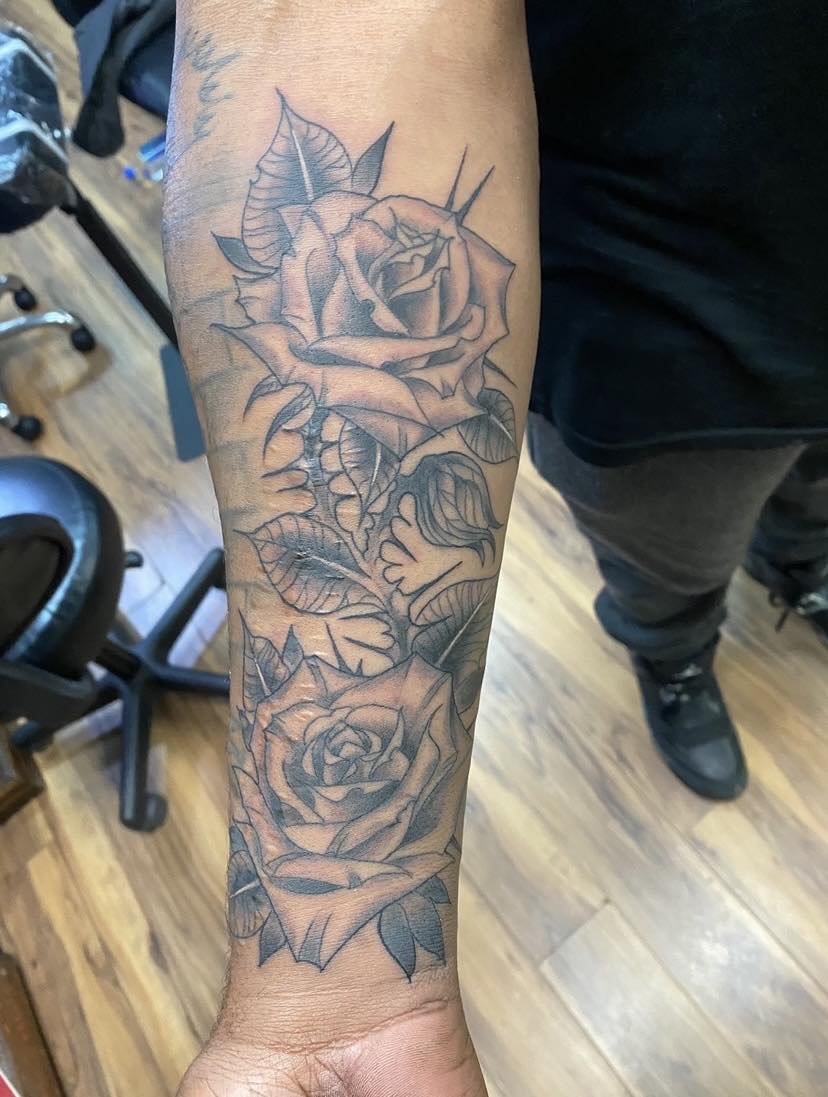Covering Scars with Tattoos | Atlanta Tattoo Shop | Gate City Tattoo
When covering a scar with a tattoo, it is essential to exercise caution. Scars, whether from accidents, surgeries, or self-harm, can be a constant reminder of past traumas or experiences. However, tattoos offer a unique opportunity to transform these scars into beautiful works of art.
Scars can sometimes hold negative emotions and memories, making it difficult to fully embrace our bodies. By covering scars with tattoos, we take back control and redefine their significance. The process becomes an act of reclaiming ownership of our bodies, turning moments of pain into symbols of strength and resilience. Tattoos have long been used as a way to symbolize personal growth, healing, and transformation. Choosing designs that carry personal meaning or symbolism helps to transmute scars into something beautiful and empowering. Through careful consultation with one of our skilled tattoo artist here at Gate City Tattoo, you can create a design that tells your unique story and serves as a constant reminder of personal strength and growth.
Tattoo by David Mosher
There are certain types of scars that may not be suitable for covering with a tattoo. Here are some examples:
Fresh or unhealed scars: It is essential to wait until a scar has fully healed and matured before attempting to cover it with a tattoo. Tattooing over a fresh scar can cause complications, such as poor ink retention, increased scarring, or infection.
Hypertrophic or keloid scars: These types of scars are characterized by excessive collagen formation and tissue growth. Due to their raised and thickened nature, they can pose challenges when trying to achieve a smooth and even tattoo application. It is important to consult with a professional tattoo artist experienced in working with scar tissue to determine the feasibility of covering hypertrophic or keloid scars.
Sunken or atrophic scars: Scars that result in a depression or loss of tissue volume may be challenging to tattoo over because the surrounding skin may stretch differently during the healing process, potentially affecting the appearance of the tattoo. These scars may require additional techniques, such as 3D shading or scar revision, before attempting to cover them with a tattoo.
Hypo pigmented or hyper pigmented scars: Some scars may have pigment alterations, appearing lighter or darker than the surrounding skin. Successfully covering these scars with a tattoo depends on the skill and expertise of the tattoo artist in matching the pigmentation and blending it seamlessly with the surrounding skin.
Tattoo by Jean-Luc
Remember, every scar and tattoo is unique. Honoring your body's journey and working closely with a professional tattoo artist will give you the best chance of achieving a beautiful result that enhances your confidence and self-expression.
It is crucial to consult with a professional tattoo artist who specializes in scar cover-ups to assess the specific characteristics of your scar and determine if it is suitable for tattooing. Tattooing over scar tissue can be more sensitive and potentially more uncomfortable than regular tattooing. Your artist should provide you with personalized advice based on their experience and expertise to achieve the best possible outcome while prioritizing your safety and satisfaction.
Tattoo by James Cooper


